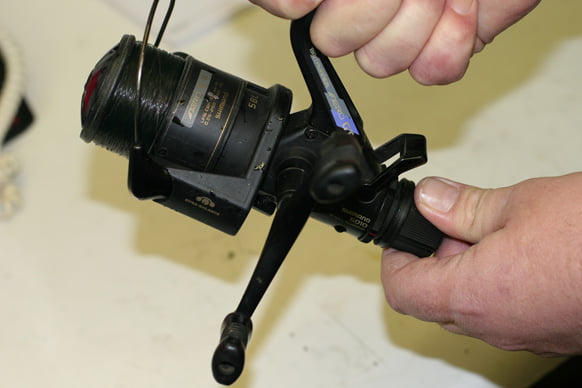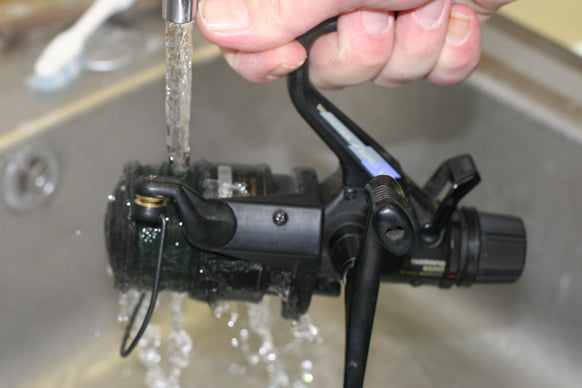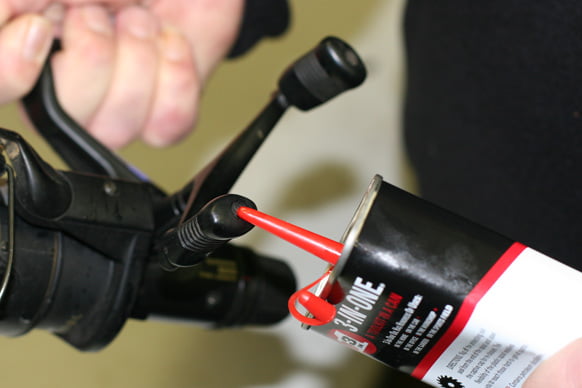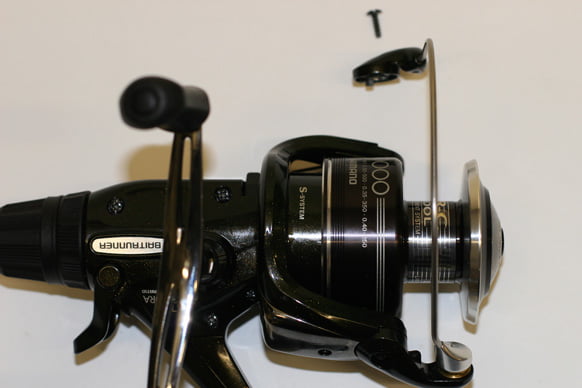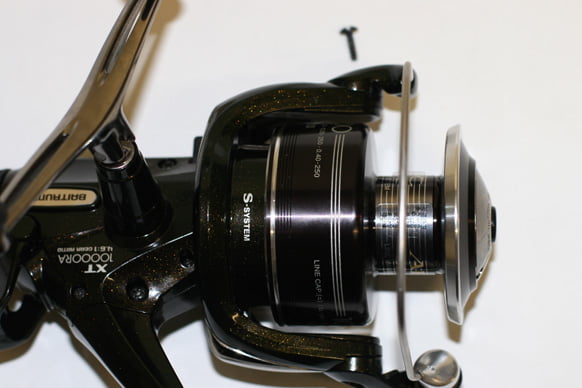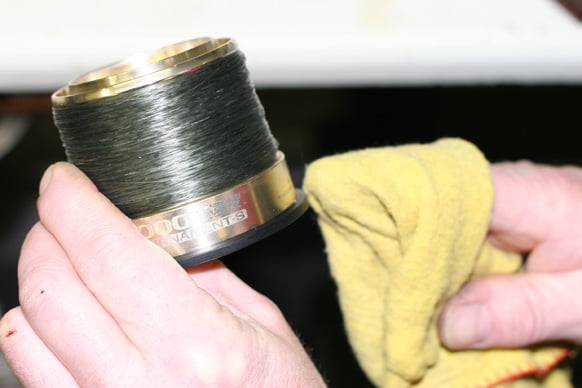General Maintenance
This is something that can be done after a session by you:
Loosen clutch and free spool tension where applicable, to prolong life of component parts.
Wash off with hot water. This takes away any dirt or bait residue that may get into the workings, and hot water will allow reel to dry on its own.
Lightly lubricate with light oil such as 3in1, bail mechanism, handle spindle and remove spool and lubricate spindle.
NB. Although lubricating moving parts on your reel will make them work smoothly, excessive oil or grease also attracts abrasives such as dust dirt and remnants of bait which can get into the mechanics of the reel and cause premature wear and tear, so be careful if you do attempt your own general maintenance.
Service Intervals
Generally we recommend that a reel be given a full strip and rebuild every two years. However this does depend on how often it is used. If you only fish through the fair-weather months then two years is probably okay, but for reels that are used all year round, then every 12 months is advisable. This sort of maintenance is not always something to do yourself, as some modern reels feature complicated mechanisms, especially a Shimano Baitrunner or other freespool models. A specialist tackle shop with a full service department will be able to carry out 99% of all servicing and repairs and will have access to any parts that need replacing, as long as your reel is not an obsolete model.
Full Strip and Rebuild
As suggested in its title, this service is the full Monty. Every single screw bolt and internal mechanism is stripped out, washed of all old lubricants, which contain the remnants of dirt and metal filings, which cause premature wear of internal components, then re-lubricated, reassembled, washed externally and presented back to owner looking and feeling like a new reel. We recommend that this type of maintenance be carried out by a specialist service centre.
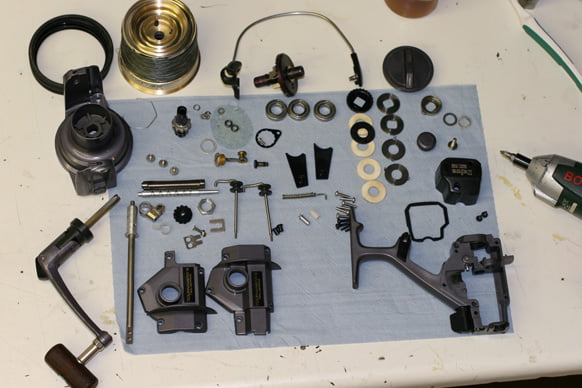
Trouble Shooting
When confronted with reel problems during a session there are ways of resolving them on the bank, but it will mean carrying a small tool kit with you.
The bail arm of most reels is constructed from a solid metal wire, which can be prone to distortion due to damage when knocked in transit or when under pressure in a holdall. This creates a pressure at each side of the bail arm, against the anchor points, and prevents the bail returning properly when reel is wound.
A good way of finding out if this is happening is to release the screw holding the bail to the rotor head, on the opposite side to the roller. If it springs away from the reel excessively then carefully push the released end over the top of the reel (it will be easier to do this if you remove the spool) until, when you put bail end back into position over its anchor point it sits square against the rotor head. If this does not resolve the problem then stop using the reel, as it will probably be an internal fault that needs expert attention. Take or send to your service centre.
If the noise is a deep rumble that vibrates through the handle there may be a main gear problem so take it to the nearest shop that specialises in servicing.
However this is usually caused by a number of problems that can be easily rectified.
a) Line roller is rotating okay, but the bush or bearing that it rides on is dry and in need of lubrication or replacing. (This normally shows up when under pressure). Some rollers quite often seize up and do not rotate all the time, which is not a problem, as they are all ultra smooth and will not cause damage to line or the roller when in this state. Most of us do not even know that the roller is seized, but the cause is that the bush under the roller is dry and is stuck. The noise occurs when, with the increased pressure of playing a fish or in my case winding in a snag, the roller suddenly decides to rotate on a dry bearing or bush.
b) Handle grip spindle is dry and needs lubricating
c) The rubber spool ring and running grommets are perishing or dry (common on some popular Daiwa reels). Putting water will cure the problem temporarily but the best way is to rectify by spraying a silicone based polish onto a cloth (PLEASE NOTE NOT TO SPRAY SILICONE BASED PRODUCT NEAR TO YOUR LINE AS IT WILL MAKE IT FLOAT) and wipe the offending items, or by replacing spool ring and/or grommets. A good service centre will stock and fit these items. Do not use oil based lubricants as they will accelerate the perishing of these parts.
This usually means that the plates have been compressed so hard over time that they just will not hold under pressure and will need replacing. If in doubt, take to a specialist service shop. The biggest cause of clutch slip, and we are all guilty of this, is leaving the clutch wound up tight between sessions. Releasing the pressure when not in use will prolong performance and life of components. This also applies to any free spool mechanisms.
This is not a fault, but a characteristic of modern fixed spool reels that feature the double helix oscillation mechanism, which determines the line lay, even from new, caused by the sudden change of direction at speed of the spool. Over time this symptom will become more exaggerated as the double helix becomes worn. Shimano have eliminated this from their latest top of the range Baitrunner (XTE-A). This will not cause the reel to fail, however if you experience a situation where the spool does not oscillate correctly, causing bad line lay, it usually indicates that there has been force applied to the front of the spool when at half or full forward position, causing damage to the helix and drive pawl. This will need specialist attention to repair.
In conclusion, general maintenance of any fishing reel is advised, but when major faults occur, take it to the experts. It won’t cost a lot, when you consider the cost of a new top range reel.
Click here to see more about the servicing and maintenance we offer.


